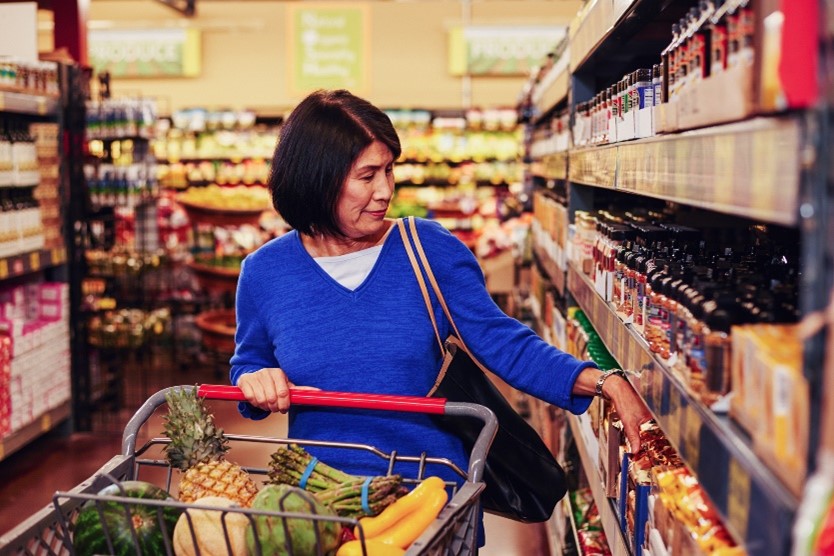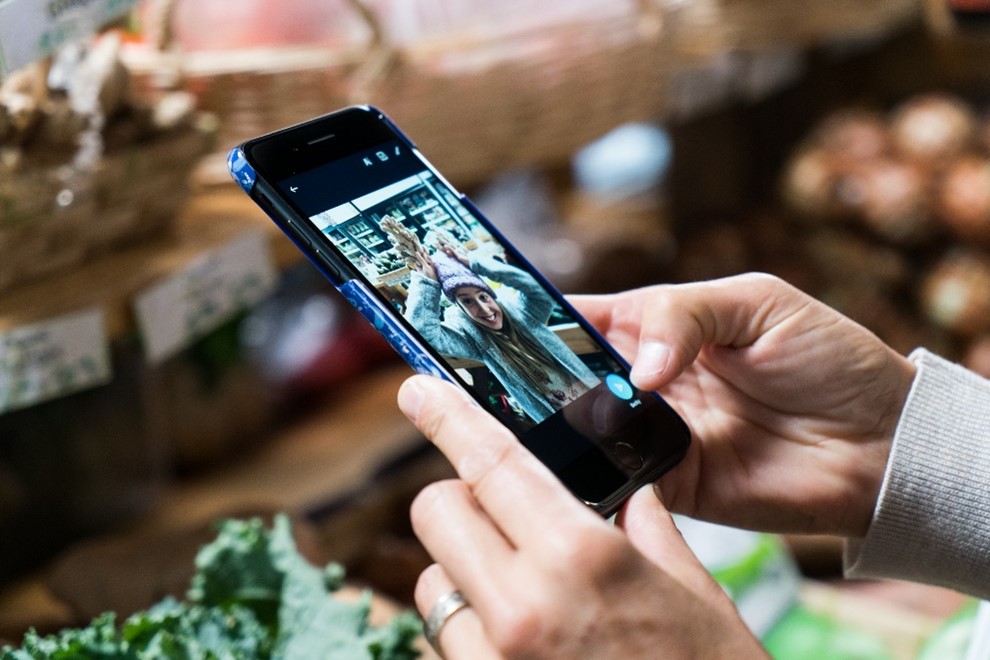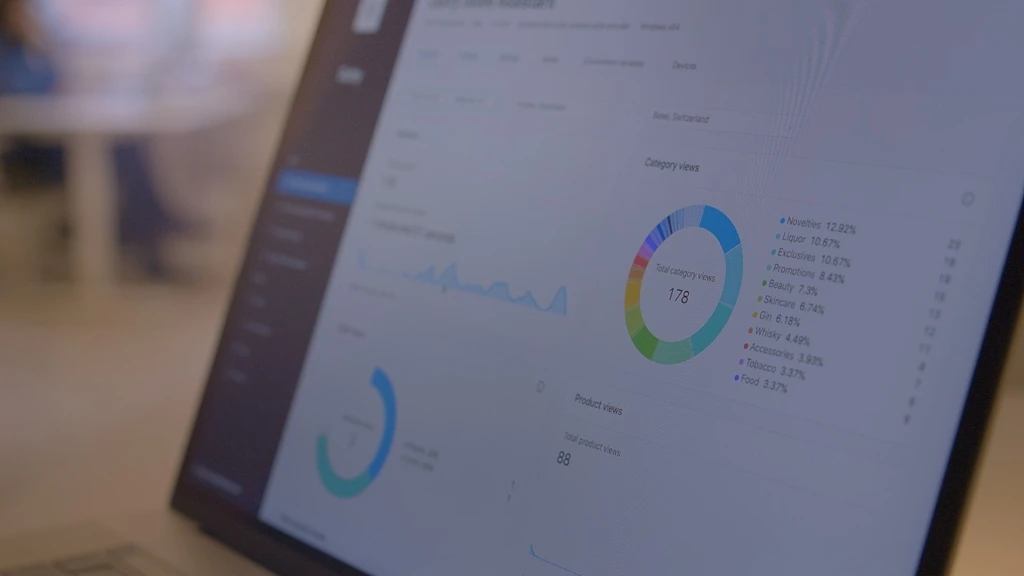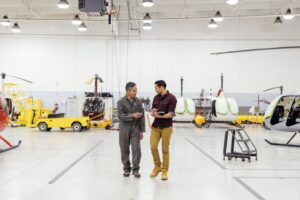
How grocery retailers are reimagining the in-store experience
This post was co-authored with Phil Skipper, Head of Strategy, Vodafone Business IoT
With the arrival of the COVID-19 pandemic, consumer behavior has changed. One seismic shift has been the rapid increase in the amount of groceries ordered online—both for delivery and for pick up. According to an article from IDC, during 2020, grocers have seen their online business double to ten percent of sales from less than five percent.1 Digital 360 Commerce wrote that the U.S.’s largest grocery chain Kroger Co. reported online sales grew 92 percent year over year in its fiscal first-quarter 2020.2
Before the pandemic, grocers were already building out omnichannel strategies to blend online and physical channels. Now, 56 percent of consumers report they plan to continue to use click-and-collect while 45 percent report they plan to continue to use grocery delivery.3 With more groceries being purchased online what is the role of the physical grocery store?
The role of the physical store
Data show that the physical store is still indispensable. For example, U.S. retailer Target’s total comparable sales grew 24.3 percent in the quarter ended August first, the strongest Target has ever reported. More than 90 percent of its sales growth involved a physical store—having items shipped from a store, picking up items at a store, or purchasing items at a register. Research published by McKinsey & Company shows that when a retailer opens a new physical location, traffic to the retailer’s web site increases by 37 percent in the following quarter.3 Additionally, retailers have a unique opportunity within physical stores to educate customers on products or reinforce brand messaging. This leads to the question of how to increase foot traffic in stores given recent trends and safety and compliance requirements due to COVID-19.

Increasing foot traffic to physical stores
To increase foot traffic in stores, grocers should reimagine the shopping experience. For example, stores may install cashier-less technology or offer endless aisles. Another approach is to use in-store displays that seamlessly connect with customers’ cell phones to create compelling shopping experiences and convert foot traffic into online relationships. For example, a customer could scan a QR code on a display in a grocery window to receive a welcome message and several personalized digital discount coupons. A display outside a store could also be used to facilitate virtual queuing to comply with capacity limits in stores due to COVID-19.
Interactive touchpoints powered by the Internet of Things
These displays or interactive touchpoints resemble the digital signs of the past, but they are implemented using an Internet of Things (IoT) architecture. User data is collected when shoppers scan QR codes on the touchpoint displays. This data is transmitted to the cloud where it is integrated with historical data and data from other business systems and analyzed for business insights. Personalized content is transmitted back to the interactive touchpoint in real-time for an engaging customer experience. By simply scanning a QR code a customer or employee takes control of the content shown on the screen, using their own device as a remote control to browse offers or relevant information.
Swedish grocer reimagines its in-store experience
A Swedish grocer recently renovated one of its stores with the dual goals of increasing the number of in-store shoppers and developing a digital relationship with each of them. Microsoft partners Ombori/ITAB worked with the grocer to envision the project, and Vodafone Business, Ombori’s global connectivity partner, brought the solution to life.
Let’s learn more about this use case through a question and answer session with Peter Dinehage, Manager of the ICA Roslagstull store in Stockholm, Sweden which is a part of the ICA Sweden Group, Sweden’s largest grocer.
Question: Peter, tell us about your retail project with Ombori and Vodafone Business.
Peter: We created a strategic initiative to craft an in-store experience that attracts shoppers for in-store visits.
Question: Tell us more about the new interactive touchpoints.
Peter: We worked with Vodafone Business to design a digital customer experience by placing interactive touchpoints at several key locations throughout our store. The touchpoints run Ombori Grid platform software built with Azure IoT services and they connect via Vodafone Business IoT to the Azure cloud and to customers’ cell phones.
Question: What went into the decision to use IoT mobile connectivity rather than fiber?
Peter: We initially set up Vodafone Business IoT connectivity to make the touchpoints live while we waited for fiber to be installed. However, it worked so well enabling a low-latency customer experience that we decided to keep it. Using Vodafone Business IoT connectivity shaved two months off our schedule because—we didn’t have to spend time on network configuration or internal security requirements.

Question: The accelerated delivery times that mobile IoT connectivity from Vodafone Business offers is especially important as grocers face both competitive pressure and the impact of COVID-19. Moving to another topic, can you take me briefly through the customer journey?
Peter: A shopper starts his journey outside the store. The shopper scans a QR code on the touchpoint in a store window with a cell phone. He receives a set of weekly offers on his phone from discounts on food to incentives to eat in the restaurant. The shopper can also use the touchpoint to arrange with a local delivery service, Picsmart, to have his groceries delivered to his home.
To accommodate social distancing requirements for COVID-19, the customer may have registered online from home to get a place in the virtual queue to enter the store or he scans a QR code on the welcome sign at the front of the store upon arrival. The virtual queuing solution allows customers to wait safely in their cars until it is time to enter the store. It also allows our employees to monitor the number of people in the store.
Once inside the store, the shopper is encouraged to check-in by scanning another QR code on a sign at the store’s entrance. The check-in touchpoint providers compelling offers for this week. The goal is to convert the physical visit to an online relationship.
As the customer travels through the store, he interacts with touchpoints along the way. He can sign into a brewery, a world kitchen, or deli kiosk touchpoint. At each touchpoint, the shopper receives discounts and recipes and can also reserve a place in line at the deli by receiving either a printed or digital ticket. At the deli, the shopper can pick up cheese, sausage, fish, or ham, then eat in the restaurant with a prosecco.
At one point, the customer encounters a selfie touchpoint. The shopper can take a selfie with an entertaining background that can be posted to social media. This offers a fun and unique experience only available in-person.
The customer also discovers an inspirational touchpoint. This touchpoint displays recipes, inspirational movies, and ads. The shopper can collect recipes as he builds out his shopping list.
Finally, the shopper ends his visit at a check-out touchpoint. The shopper checks out as he waits in the queue to pay. This interaction helps pass the time if there is a line and provides an offer for eating at the store restaurant after shopping.
Question: What is the process for maintaining and updating the touchpoint content?
Peter: Our Ombori Grid platform includes content templates that our customer populates with much of the same content used on the web site and in online promotions. The template makes it easy to organize and maintain the content needed for an inspiring customer journey through the store.

Question: What was a highlight of the project?
Peter: We were surprised and pleased with the Ombori Grid Analytics dashboard. It displays data based on customer interactions with the touchpoints which give us new insights. It allows us to better understand customer preferences and behavior and fine-tune messaging and offers to increase customer engagement.
Question: What are the initial results from the project?
Peter: We launched the solution in July, and we can already see that the in-store shoppers are participating and interacting with the screens.
Next steps
Grocers need to reimagine physical stores as they look for ways to increase in-store shopping and build online relationships with customers. Swedish grocer ICA Roslagstull, part of ICA Group in Sweden, is seeing success reimagining the shopping experience using interactive touchpoints connected to customer cell phones that offer a differentiated shopping experience.
Learn how Microsoft enables intelligent retail with partners like Ombori and find out more about Vodafone Business IoT offering.
Visit Azure AppSource to learn about the Ombori Grid, a single platform for all in-store digital experiences
1 IDC, The Future of Grocery, August 2020
2 Digital Commerce 360, The coronavirus pandemic lifts global online grocery sales, July 2020
3 McKinsey, Adapting to the next normal in retail: The customer experience imperative




